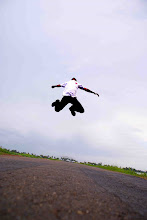Orbs are believed (by many) to be ghosts in the form of balls of light. They are life forms that travel in groups and are believed to be the human soul or life force of those that once inhabited a physical body here on earth. Psychics claim to talk to them on a regular basis, and ghost hunters encounter them quite frequently. It is said that they are those spirits that have willingly stayed behind because they feel bound to their previous life or previous location for whatever reason. Because of this obsession they tend to become similar to a psychotic human beings. It should be said that the majority of us when we die proceed gladly and willingly to the next level of existence after saying our quiet good-byes, which means we're off to the spirit world. Then again, as stated, a select few elect to stay behind because of a refusal to move on. Apparently the longer they stay behind, the harder it is to find their way to the next level, which again, is the spirit world.

Ghostly orbs are the most photographed anomalies caught on film by ghost hunters and are quite photogenic (when they want to be). They can be completely transparent or display themselves in a bright solid form. It is not hard to capture them on film in their circular form. It is theorized that ghosts prefer the form of an Orb (ball of light) because it takes less energy thus being the mode of choice among the ghosts. The consensus is that small orbs take up the least amount of energy and apparitions and other fuller shapes take up the most. In the colder parts of the year, it seems that ghosts tend to find it easier to take on shapes other than orbs. That's when there is the most static electricity in the atmosphere. Those months being October through February. It is also believed that they are able to draw on our own energy when needed. I've listed these ways but there are obviously many ways for ghosts to draw energy from the atmosphere and environment but I won't take the time for that here.

If you're wondering, ghosts are normally harmless for the most part and have relatively no desire to bring harm to anyone nor do they have much of an awareness to act as such. Ghosts however, have been known to disrupt the lives of those that they effect and play pranks and move things about. To state it plainly, they are actually limited in the activities that they are able to carry out in their frame of existence. Non-human forms as well as evil spirits and demons, who have never had a body, have additional powers and have the ability to sway our thoughts and tempt our reasoning. This is why Ouija boards and other similar devices should be shunned! They have the ability to open windows into other realms of existence and can attract evil or bad spirits. If you are experiencing what you consider to be the effects of an evil spirit or demon in your life then it could be the location where you are living, but you must also consider your life style as well. In other words, how you are living or the activities that you involve yourself in that might inadvertently be drawing them to you.
I might also mention a word or two about spirits in this forum. First of all, as I have alluded to earlier, ghosts and spirits are not quite the same. Spirits are capable of continuing a full existence on the other side with their full mental and emotional facilities intact, unlike their counterpart the ghost. You will most likely not encounter a spirit on a ghost hunt as you would a ghost. When they are detected, it is believed that their appearance might be in the form of ectoplasm mist, as well as a full bodied apparitions. They are permitted to visit on occasion and even communicate a message when they have permission to do so but for the most not they will not be picked up on any ghost detection devices or be photographed by any cameras (for the most part). Many believe that we have spirits assigned to watch over us, and that might very well be true but you won't normally be detecting them unless they have a special purpose in making there presence known. In other words Spirits (not ghosts) seem to have a finer spirit tissue that is for the most part undetectable.
There are other theories concerning ORBS. I have in the past heard such theories that orbs might simply be Nature spirits or Airborne protoplasm as you would find under a microscope, except far more advanced.
Other types of ghostly phenomenon are the vortex (funnel shaped appearance) and Ectoplasm (it has a mist or foggy appearance) also called Ecto Mist. These are often picked up on film and video as well but are much more rare. I'm not making any determinations to their origin but welcome any of your opinions on the subject.

